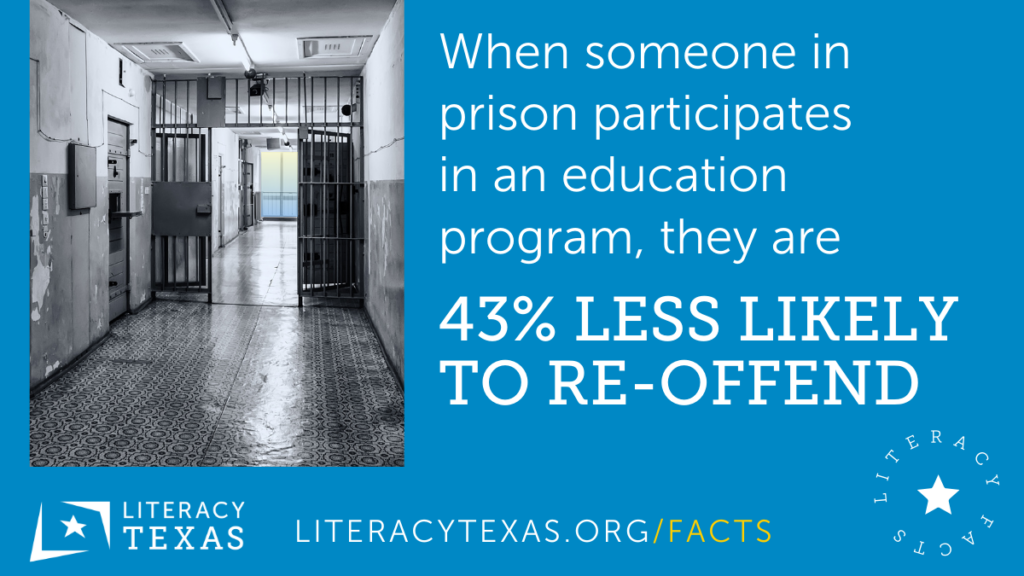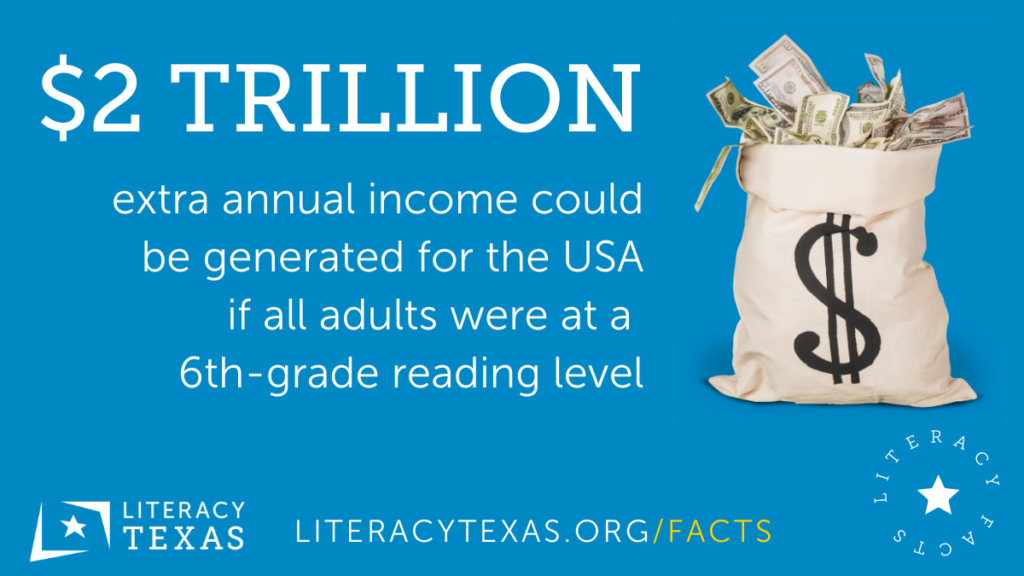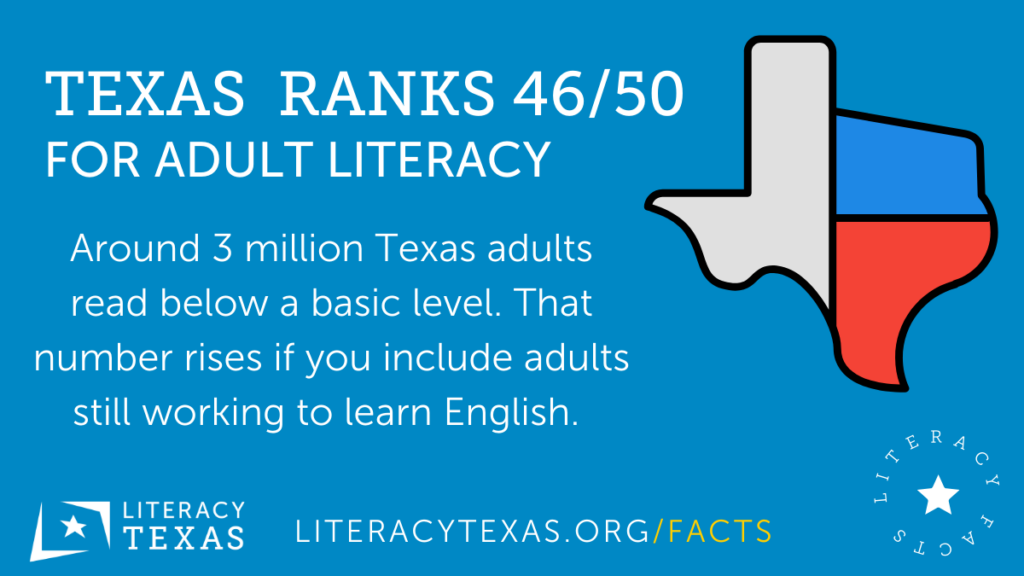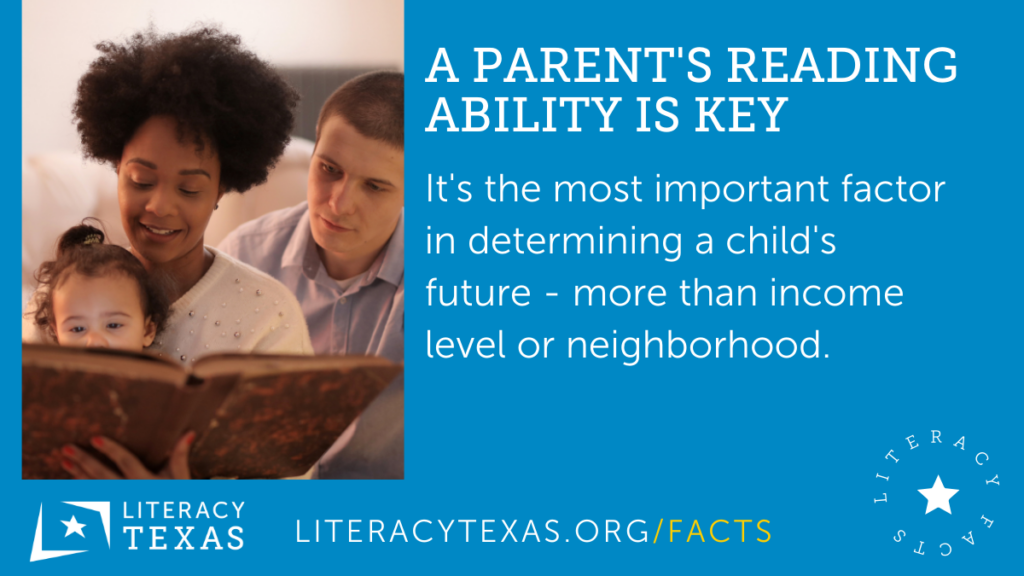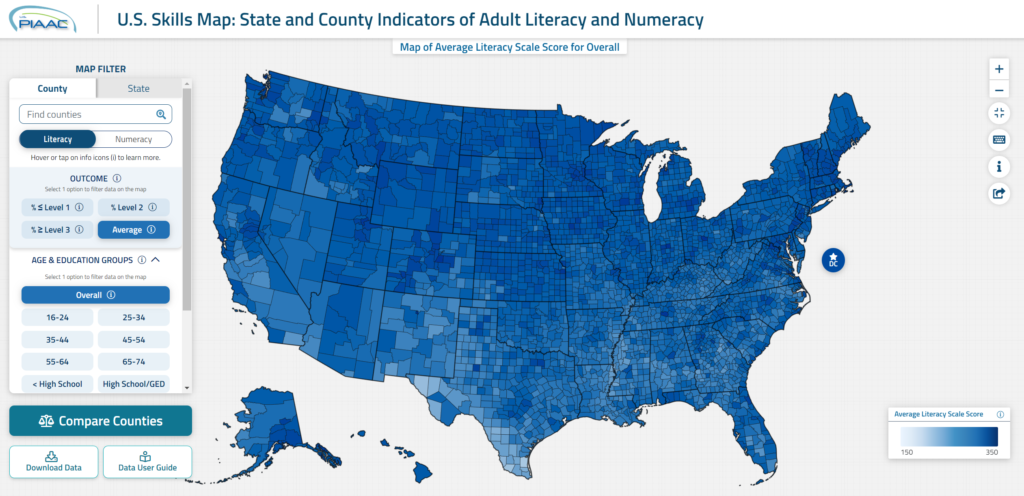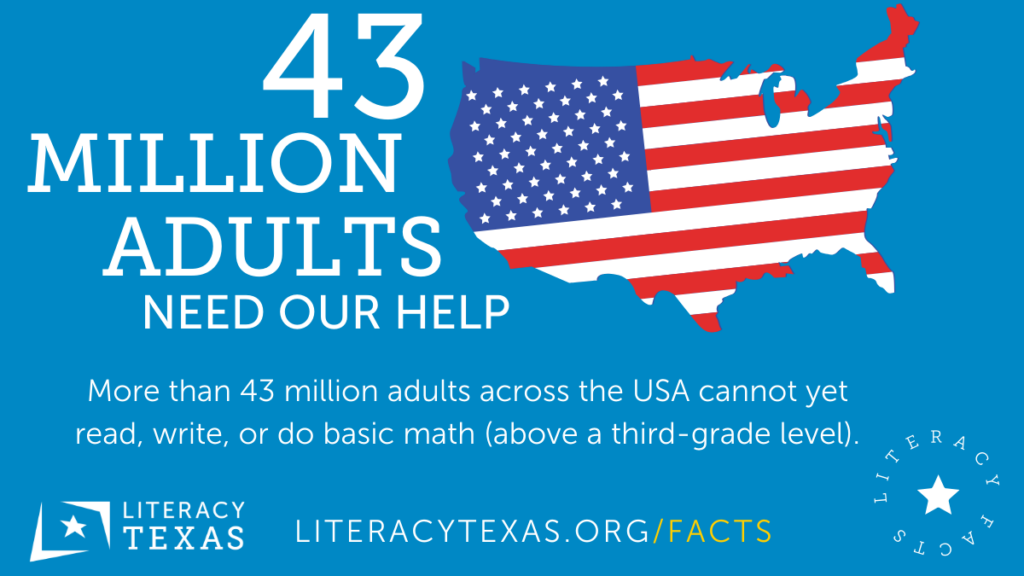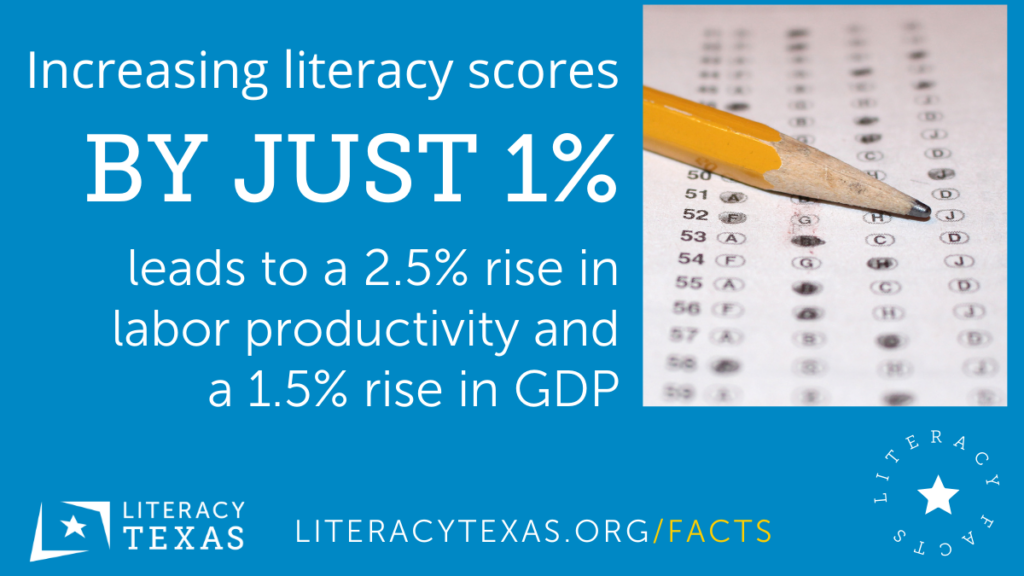Living in the modern world requires all kinds of skills. Literacy is necessary for many of those skills, linked to education, career success, and navigating society and the world with confidence, discernment, and enjoyment. Read more here about how we define literacy – it’s more than just reading and writing!
But even though literacy is so crucial, many people in the United States haven’t yet reached the level of literacy they need to fulfil their potential and achieve their goals.
Browse literacy facts and stats by scrolling, or use the quick links below to jump directly to the section you want.
Literacy in the United States
- More than 43 million adults in the United States cannot read, write, or do basic math above a third-grade level. (Source)
- Around 130 million adults in the U.S., or 54% of Americans between the ages of 16 and 74, read below the equivalent of a sixth-grade level. (Source)
- A rise of just 1% in literacy scores leads to a 2.5% rise in labor productivity and a 1.5% rise in GDP. (Source)
- If all adults could reach the equivalent of a sixth-grade reading level, up to $2.2 trillion additional income could be generated annually for the United States. (Source)
- An estimated $106 – $238 billion in health care costs every year are linked to low adult literacy skills. (Source)
- 88% of U.S. adults do not have the health literacy to adequately navigate the healthcare system and advocate for their personal health. (Source)
- Around 75% of people currently in prison have low literacy skills. (Source)
- When people who are in prison participate in education programs, they are 43% less likely to re-offend, compared to people who do not participate. (Source)
- The reading skill of a child’s main caregiver – usually their mother – is the greatest determinant of that child’s future academic success, more significant than other factors like neighborhood or family income. (Source)
Literacy in Texas
- Texas ranks 49 out of 50 among states in the percentage of the adult population with a high school education; 16% of adults over 25 in Texas don’t have a high school diploma or equivalent. Tens of thousands of Texans are on waiting lists for basic education in any given year. (Source)
- Texas ranks 46/50 for adult literacy. The adult literacy rate is 81%, with 19% of adults lacking basic prose literacy skills. (Source)
- 4.8 million Texas adults are in need of adult education programs. Federal funds serve about 3% of that need. (Source)
- Texas ranks 41 out of 50 among states in the percentage of 18- to 24-year-olds enrolled in colleges and universities: 39.6%. (Source)
- Texas ranks 46 out of 50 among states for the number of libraries per person, with 3.2 libraries per 100,000 residents. (Source)
- The pre-kindergarten system in Texas meets only 2 of 10 quality standards, ranking 28 out of 50 among states nationally in pre-kindergarten funding levels. (Source)
- Texas spends $8,350 per student on average and ranks 43 out of 50 among states in total “per pupil” expenditures, compared to a national average of $11,762 per student. (Source)
- 43% of adults with the lowest levels of literacy live in poverty, compared to only 4% of those with the highest literacy skills. (Source)
- 1.7 million Texas children live in poverty. Poverty can be both a cause and a result of low literacy. (Source)
- 6.5 million Texas residents – almost 40% – speak a language other than English at home. This is close to double the national average. (Source)
PIAAC Skills Study & Map
The National Center for Education Statistics surveyed more than 12,000 US adults between 2012 and 2017 for the Program for the International Assessment of Adult Competencies (PIAAC), an international study involving over 35 countries.
By using PIAAC survey data in conjunction with data from the American Community Survey, the Skills Map provides reliable estimates of adult literacy and numeracy skills in all 50 states.
Why do we talk about “third-grade level” when discussing literacy?
Applying children’s grades to adults is sub-optimal at best. But it’s a reference point that’s familiar to many, so it’s often used when talking about literacy to illustrate the types of skills people may still need to learn.
Third grade is usually the year when children move from “learning to read”, to “reading to learn”. By the end of third grade, a child “at grade level” is typically:
- Reading small-print books with chapters, multiple detailed events, sophisticated language, and/or academic vocabulary.
- Reading and writing about new and complex ideas, concepts, or topics.
- Reading silently.
- Using reading strategies flexibly and smoothly to understand text.
- Building background knowledge and using prior knowledge to understand new ideas, concepts, or topics.
- Connecting concepts and ideas across multiple texts.
- Examining the craft and structure of a text.
- Asking and answering questions while reading to self-monitor for meaning.
- Demonstrating literal, inferential, and critical comprehension through discussion.
The skills children ideally learn in third grade lay the groundwork for the learning, critical thinking, and literacy development that comes later. So when an adult’s literacy has been halted at around that point, they’re missing some crucial skills.
Of course, most adults have still continued to learn in other ways, often working to compensate for missing literacy skills through creative problem-solving or other work-around skills. And low literacy is definitely NOT correlated to low intelligence. All of these, and more, are reasons to be cautious when applying grade levels to adults.
Nevertheless, low literacy continues to hold back too many adults in Texas and the United States from reaching their goals, and from fully realizing life, liberty, and the pursuit of happiness.
Predicting the future - or at least trying to
The Texas State Demographer’s Office projects that by 2040:
- The population of Texas will increase to 35.8 million, a 151% increase from 1980.
- The percentage of the population 65 and older will nearly double to 18%.
- There will be 18.8 million Hispanic people in Texas, a 530% increase from 1980.
- There will be continuing shifts in populations from rural to urban areas.
The Texas Association of Workforce Boards has concluded that Texas faces a crisis in education and unless changes are quickly made, by 2040 Texas will experience a weakened economy, with an under-educated workforce that will be less attractive to businesses, a decreasing tax base to fund state and local governmental services, and declining revenues to build and maintain infrastructure. (Source)
The Texas Higher Education Coordinating Board projects that by 2040, the Texas labor force will need 60% of all 25- to 34-year-olds — almost 2 million people — to hold industry-recognized certificates and college degrees. Only around 35% of this group currently has those qualifications. It’s predicted that technology will replace around 20% of workers with the lowest literacy. (Source)
Get Texas literacy updates
Make sure you’re on our mailing list so you don’t miss any news:
- Conference updates
- Regional symposia
- Online training
- Advocacy
- …more!

